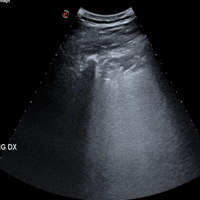 Smart Citations
Smart CitationsSee how this article has been cited at scite.ai
scite shows how a scientific paper has been cited by providing the context of the citation, a classification describing whether it supports, mentions, or contrasts the cited claim, and a label indicating in which section the citation was made.
Lung ultrasound monitoring of CPAP effectiveness on SARS-CoV-2 pneumonia: A case report
SARS-CoV-2 infection is characterized by extremely heterogeneous features, going from cases with few symptoms to severe respiratory failures. Chest Computed Tomography (CT) is currently the gold-standard imaging method, although burdened by the risk of exposure to ionizing radiation and management / organizational concerns. In particular, the critical patient undergoing ventilation (invasive or not) seems to be difficult to monitor by repeated CT scan over time. We report the case of a 55-year-old male patient subjected to Continuous Positive Airway Pressure (CPAP) and prone positioning, in which the use of ultrasound monitoring allowed to verify the effectiveness of the pressure support used in recruiting previously atelectasis lung areas. Lung ultrasound can guide pulmonary recruitment and pronation maneuvers in patients undergoing non-invasive ventilation. Ultrasound can identify atelectatic lung areas, which demonstrate an alveolar re-expansion following the setting of high PEEP values, as underlined by the reappearance of pleural/air interface.
How to Cite
PAGEPress has chosen to apply the Creative Commons Attribution NonCommercial 4.0 International License (CC BY-NC 4.0) to all manuscripts to be published.

 https://doi.org/10.4081/ecj.2020.9333
https://doi.org/10.4081/ecj.2020.9333





